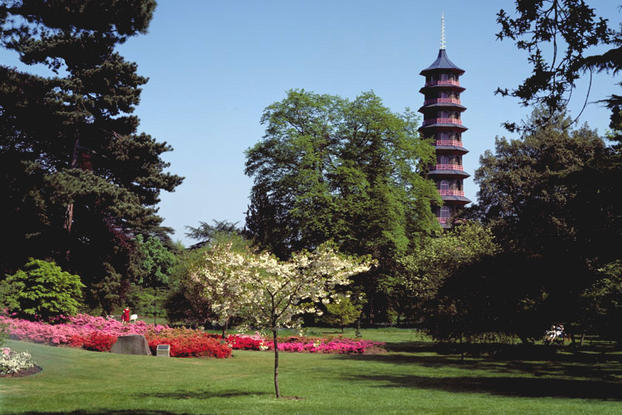I’ve had a really busy week, sorry for the lack of updates. Guess this is what happens when you get overwhelmed with paid work on top of 1 submission and a major midterm…
Anyway, time to talk about my object label. In my research on Chinoiserie gardens, I found out that there were very few that remained intact or in its original state. This was because Chinoiserie was a fad followed by the upper classes and as with any other fad, soon went out of style; gardens were remodelled to keep up with the times. What did remain were usually the garden’s architectural structures, like pavilions or Chinese-style bridges, or architectural plans of the structure or proposed garden.
Initially, our team wanted to show the European Chinoiserie lifestyle in general, but it was pointed out to us that it would be too broad and not a good representative of a particular lifestyle, since there would be various factors to account for like time period, the socio-political environment and the state of Chinese imports at the time.
Thus, I had to narrow down my potential objects from three to one when we decided to centralise our findings around the English 18th-century Chinoiserie lifestyle. The three possibilities were originally Woburn Abbey’s Hornbeam Maze (a 19th-century pagoda based on Sir William Chambers’ design), Versailles’ Trianon de Porcelaine (a 17th-century French pavilion made in the Chinoiserie style, surrounded by lush gardens) and the Kew Gardens’ Great Pagoda.
After refining our scope of exploration, the Kew Gardens’ pagoda was the only possible contender.

Sir William Chambers
A View of the Wilderness with the Alhambra, the Pagoda and the Mosque
Plate 43 of William Chambers’ s ‘Plans, Elevations, Sections and Perspective Views of the Gardens and Buildings at Kew ….’ 1763
Etching on paper
1763
315 x 473mm
Object label
This etching depicts the Great Pagoda at Kew Gardens, designed by Sir William Chambers (1722–96). It was featured in Chambers’ book ‘Plans, Elevations, Sections and Perspective Views of the Gardens and Buildings at Kew in Surrey (London)’ in 1763, following the completion of the gardens in 1762. The ten-storey octagonal pagoda was the tallest Chinese-style building in England at the time, towering over much of Kew Gardens at a height of 50m (164ft). It was also the most accurate of all Chinese-style buildings in Europe for its time, despite the minor error of it having an even number of storeys, where true Chinese pagodas had an odd number of storeys. The design of the pagoda was based on Chambers’ travels to Canton, and the pagoda’s vibrancy was the talk of the town; its roofs were covered with varnished iron plates and each corner had a gilt golden dragon made of wood perched on it. A total of 80 dragons were made for the roofs but by the 1780s, were removed due to rot. This short lifespan was characteristic of many of Chambers’ work at Kew Gardens such as the House of Confucius, Alhambra and Exotic Garden, which have all subsequently been demolished. It was therefore a surprise for the public that it remained standing and even served as a site for bomb-testing during the Second World War.
